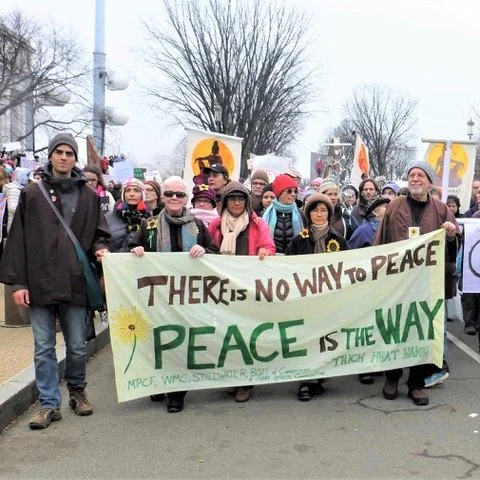This Monday June 3, we will meet in person.
Go to calendar for our schedule
Address for OHMC meditation space:
3812 Northampton St. NW, Washington DC 20015
Please arrive a few minutes early so we can invite the bell on time. You may also arrive 15 minutes early to practice working meditation by helping us set up cushions.
Optional newcomers orientation this Monday at 6:15pm. Sign up here.
Dear Friends,
This week: we will meet Monday from 7-8:30PM EDT in person at our meditation space (3812 Northampton Street NW), Wednesday morning from 7-8AM EDT online, and Friday 12-1PM EDT in person.
On Monday, Annie will facilitate.
We will watch a video of a talk by the Dharma teacher Mitchell Ratner (Thich Nhat Hanh’s student for over 30 years) given last month at the Order of Interbeing retreat at Deer Park Monastery.
Over the years, our sangha has had many conversations about what it means to be an engaged mindfulness practitioner and how we live our practice in the world. Since October 7, I have heard from several sangha members, worried about statements and activities coming out of Plum Village, ARISE (Awakening through Race Intersectionality and Social Engagement), and Opening Heart – especially those that are calling for peace in Israel and Gaza.
To me, this points to a need for more open conversations on Engaged Buddhism/Mindfulness in a safe Dharma Sharing format. Dharma sharing is a time to share our hopes, joys, fears, sadnesses, and upsets within a container of love, with the support of the sangha and the practice. Everyone in a dharma sharing circle is practicing mindful speech and deep listening as best they can and avoiding engaging in debate. This creates an opportunity to be heard and to learn about the suffering of others that we may not be aware of.
This Monday, we will watch Mitchell’s excellent talk What Engaged Buddhism Means to Me (minutes 1:05:30 - 1:28:25), which focuses on the history of eEngaged Buddhism, including Chinese monk Taixu’s influence, and the facets of Engaged Buddhism that are important to him:
Embodying the practice (silence, simplicity, and community)
Karuna or compassion (responding to the suffering of others and joy on the path of service)
Non-attachment to views or knowing that truth is found in life (Don’t ask for an absolute)
Sangha (Mitchell added this at the end of his talk)
In his talk, Mitchell shares three quotes from Thich Nhat Hanh (Thầy), which you can read below.
Tara Brach also recently wrote a blog post on this subject: What is Love Asking from Us? Reflections on Gaza and the Bodhisattva Path. She writes:
Over these months, my deepest inquiries continue to be: What is love asking from me? How can we take action in ways that liberate ourselves and others?... Choosing love has the power to free us from suffering. This is the essence of the Bodhisattva Path, a path dedicated to awakening our hearts and bringing healing and freedom to all beings…
The compassion of a Bodhisattva is inclusive of all beings. And yet when we or others are threatened or harmed, especially when we’ve been traumatized, we lose our capacity for empathy. The threatening other is experienced as bad, and not human like ourselves. This isn’t our fault. The habit of demeaning and dehumanizing others is a universal and biologically rooted response from our survival brain. It’s much simpler and faster to create an enemy– a default to black and white thinking – than to open our hearts to the complex reality that humans who cause suffering are themselves wounded and suffering.
After we listen to Mitchell’s talk together, we will sit for a few minutes to reflect on the questions he and Tara pose:
What facets of Engaged Buddhism are important to you?
What is love asking from you as you look at the suffering in the world right now?
What quality of being in the world or what words would you use to describe Engaged Buddhism?
We will share in small groups and then in the large group about what comes up for us.
I look forward to seeing you on Monday.
with love,
annie.
===
Quotes by Thầy on Engaged Buddhism:
Thich Nhat Hanh, 2008 Talk in Hanoi on “The Definition of Engaged Buddhism”:
When we speak about engaged Buddhism, we speak first of a kind of Buddhism that is present in our daily life at every moment. When [people] hear about engaged Buddhism, they think of fighting for social justice, fighting for human rights, organizing demonstrations, and so on. But that is not true. That is part of the practice, but not the basic part. The basic part is to have the practice alive in every moment of your daily life. You should be there in order to attend to what is happening in the here and now, in the realm of the body, the realm of the mind, the realm of environment.
Thầy writes in Peace is Every Step:
Mindfulness Must Be Engaged
When I was in Vietnam, so many of our villages were being bombed. Along with my monastic brothers and sisters, I had to decide what to do. Should we continue to practice in our monasteries, or should we leave the meditation halls in order to help the people who were suffering under the bombs? After careful reflection, we decided to do both—to go out and help people and to do so in mindfulness. We called it engaged Buddhism. Mindfulness must be engaged. Once there is seeing, there must be acting. Otherwise, what is the use of seeing?
We must be aware of the real problems of the world. Then, with mindfulness, we will know what to do and what not to do to be of help. If we maintain awareness of our breathing and continue to practice smiling, even in difficult situations, many people, animals, and plants will benefit from our way of doing things. Are you massaging our Mother Earth every time your foot touches her? Are you planting seeds of joy and peace? I try to do exactly that with every step, and I know that our Mother Earth is most appreciative. Peace is every step. Shall we continue our journey?
In 2011, during a question and answer session at Plum Village, a practitioner asked Thầy: “In the face of extreme violence such as genocide is it ever acceptable to respond to violence with action, including even violent action?”
Thay began his answer by explaining that it is our inner intention that determines whether a response is nonviolent or violent, not what we do or don’t do:
Nonviolent action is not a technique. It is a way, not a technique. The foundation of nonviolent action is understanding and compassion. When you have understanding and compassion in your heart everything you do will be nonviolent.
Suppose someone is killing, someone is breaking the law and you arrest him and put him in jail. Arresting that person and putting him in jail, is that violent or nonviolent? It depends on the situation. If you arrest that person, if you lock him up and yet you do it because of understanding and compassion, that is nonviolent action.
Even if you don’t do anything, you allow the people to kill and to destroy, although you don’t do anything, that is also violence. Violence can be action or non-action. The outer appearance might be violent, but if you do it with a mind of understanding and compassion, it is not truly violent. ... I think nonviolence can never be completely absolute. We can say that we should be as nonviolent as we can. When we think of the military, we think that the things that the military do are only violent. But to conduct an army, to protect a town, to stop an invasion of a foreign army, there are many ways to do it. There are more violent ways, and there are less violent ways. You can always choose.
Maybe it is not possible to do it 100% nonviolent, but 80% nonviolent is better than 10% nonviolent! See? So don’t ask for an absolute. ...
You cannot be perfect in the practice. Do not worry that you will not be perfect. ... what is important is that you are determined to go that way. You do your best, that is what we need. ... So the Five Trainings are like that. You should go in the direction of understanding and compassion. You don’t have to be perfect. If you know that you are doing your best, that is good enough for the Sangha. That is, good enough for the Buddha. So nonviolence is the same. We have to do our best.

